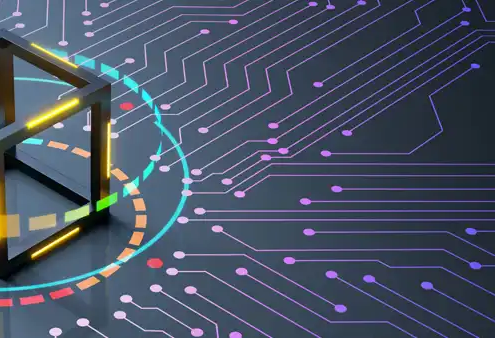Developing An AR Experience: 8 UX Principles To Consider
April 1, 2024

21st-century education isn’t only about making students learn concepts, preparing them for examination and life’s race. It has transformed into a competitive realm that demands educators to be competent across every aspect such as administration and strategy, apart from the academic one.
According to an India Today article, India’s CBSE (Central Board of Secondary Education) has already started using blockchain for various purposes within the education ecosystem. Many might want to read it again. Blockchain in education? But that’s right. So far, you must have heard about blockchain making its way into the BFSI sector. However, what application could blockchain have in education? Where has it already found its place in the highly digitized (post-pandemic) and competitive education sector? Come, let’s find it out.
Apart from the competition, one of the most vital reasons for the rapid integration of technology is students and parents becoming more demanding. A significant part of the control has now shifted to the other side of the table, unlike yesteryears, wherein it remained with the educational institution. Here are some ways through which blockchain can make a potential difference in the rapidly evolving education sector
Managing student records manually can prove quite a laborious task for the administrator of a large university, school, or college. Many have digitized and automated this task to quite an extent. However, the introduction of blockchain can further enhance it. It can help them in various areas and make it a blissful affair. How?
Blockchain can help seamlessly transfer records of students, who are on exchange programs or those leaving the institution midway. It can allow straightforward access to the records of various students and enable a quicker and better exchange of content across institutions. Additionally, when the institution stores information on a blockchain, it will receive a document confirmation in a matter of a few clicks.
The education sector has already stepped out of the conventional, manual recording of student records in files and folders. It has digitized it to a significant extent and therefore you cannot see large heaps of files anymore on the staff room shelves. However, now, it is time for institutions to upgrade and become more competent.
How do institutions do it? Many may say, they’ve already digitized the document storage aspect? What next? The fact is, in the case of many institutions, the capacity of the current digital storage isn’t adequate. On the other hand, scalability is also a crucial concern.
Blockchain proves an effective way of dealing with these issues. It is a large and open-access online ledger, the integration of which, with cloud, can enhance the process of document storage and expand the storage capacity to accommodate an even higher number of records, thus making document storage and management even simpler for educational institutions.
Unfortunately, many people fake their educational qualifications and academic certificates. However, the education sector can avoid this to a considerable extent with the help of blockchain.
Blockchain provides a consistent and transparent ledger for all educational qualifications. Once updated, fidgeting with the information or hacking it (even for professional hackers) is highly challenging. Across various stages, you will require the administrator’s consent to manipulate information. Furthermore, universities can build a ledger with a custom blockchain protocol, which can help issue student certificates and transcripts.
Plagiarism is another prominent concern prevalent across the global education ecosystem. However, blockchain technology can help content developers curb the distribution of copyright educational content on the internet. It will help ensure the storage of information in a secure chain featuring advanced encryption and multi-factor authentication to access it. That will enable only authorized people to access the information and allow only the owners to provide others access to copyright content.
Course evaluation is another area where blockchain can help the education sector. Educational institutions can use blockchain for smart contracts, which can help an instructor create a smart contract that outlines the list of tasks required to complete a particular course. Whenever a student completes a task, a smart contract will evaluate and verify it. Once it is confirmed that the student has completed all the tasks, the educational institution will provide a certificate or credits for it.
Similarly, the use of smart contracts on the blockchain can enable instructors to create examination papers, along with the scoring pattern and the answer key. Students can attend the examination online and blockchain will grade each response. It can help enhance the response evaluation process and relieve teachers from the daunting task of checking answers, thus enabling them more time to focus on enhancing competence.
All said and done, educational institutions need efficient blockchain developers to optimize the benefits of blockchain across each of the above applications. Partner with Qodequay, one of the leading blockchain development companies for customized blockchain solutions. Qodequay’s extensive experience and evolved expertise across the blockchain sector enable educational institutions to enhance competence, increase productivity and strengthen the overall educational system.
To know more, write to contact@qodequay.com.